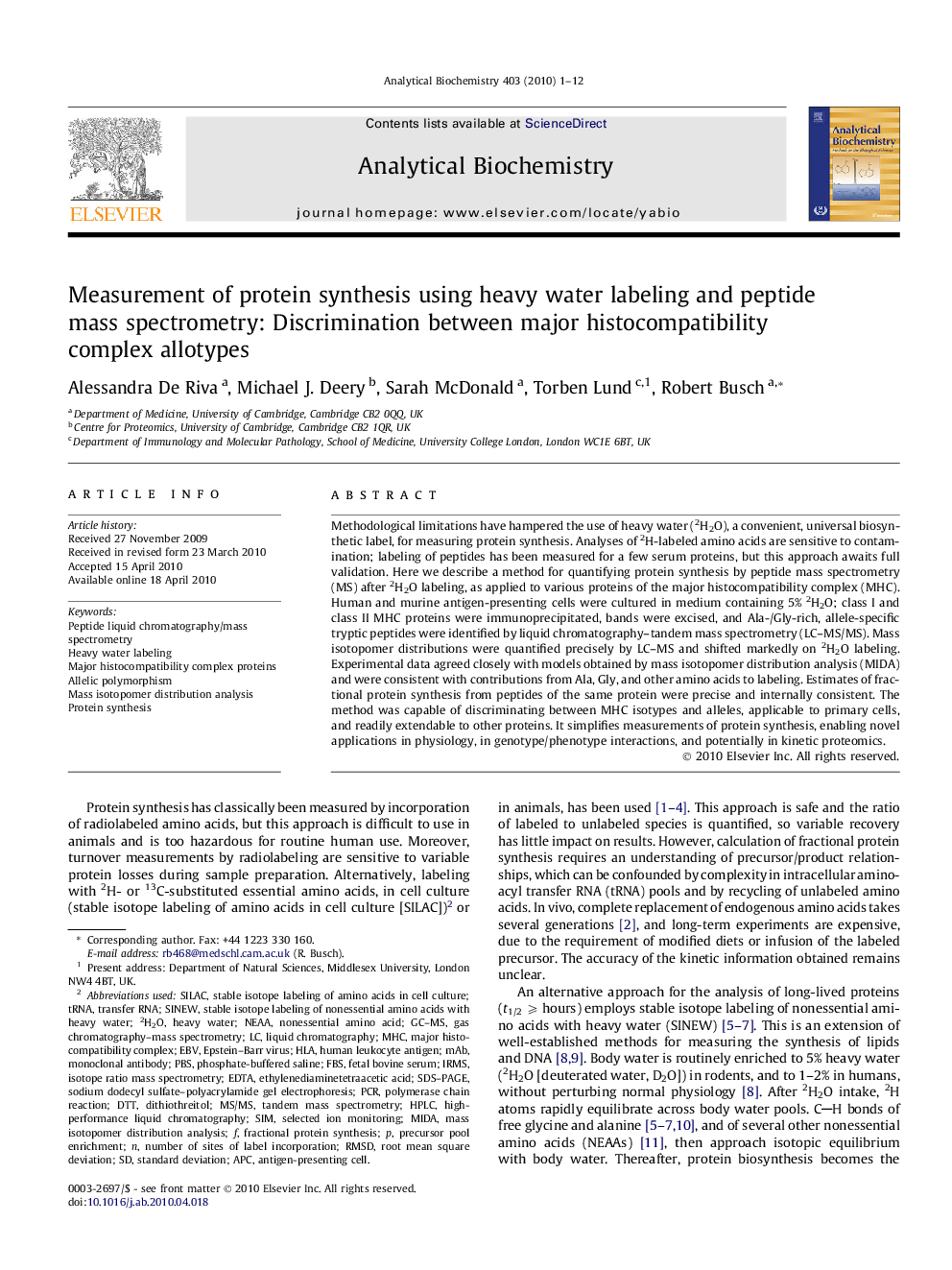| Article ID | Journal | Published Year | Pages | File Type |
|---|---|---|---|---|
| 7559785 | Analytical Biochemistry | 2010 | 12 Pages |
Abstract
Methodological limitations have hampered the use of heavy water (2H2O), a convenient, universal biosynthetic label, for measuring protein synthesis. Analyses of 2H-labeled amino acids are sensitive to contamination; labeling of peptides has been measured for a few serum proteins, but this approach awaits full validation. Here we describe a method for quantifying protein synthesis by peptide mass spectrometry (MS) after 2H2O labeling, as applied to various proteins of the major histocompatibility complex (MHC). Human and murine antigen-presenting cells were cultured in medium containing 5% 2H2O; class I and class II MHC proteins were immunoprecipitated, bands were excised, and Ala-/Gly-rich, allele-specific tryptic peptides were identified by liquid chromatography-tandem mass spectrometry (LC-MS/MS). Mass isotopomer distributions were quantified precisely by LC-MS and shifted markedly on 2H2O labeling. Experimental data agreed closely with models obtained by mass isotopomer distribution analysis (MIDA) and were consistent with contributions from Ala, Gly, and other amino acids to labeling. Estimates of fractional protein synthesis from peptides of the same protein were precise and internally consistent. The method was capable of discriminating between MHC isotypes and alleles, applicable to primary cells, and readily extendable to other proteins. It simplifies measurements of protein synthesis, enabling novel applications in physiology, in genotype/phenotype interactions, and potentially in kinetic proteomics.
Related Topics
Physical Sciences and Engineering
Chemistry
Analytical Chemistry
Authors
Alessandra De Riva, Michael J. Deery, Sarah McDonald, Torben Lund, Robert Busch,
